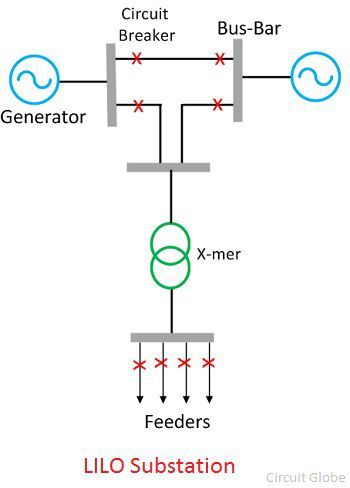The substation is the part of an electrical supply system which transmits the high voltage from the generating substations to the local distribution networks. Between the generation and distribution, the voltage may vary through several substations. The different types of layout for substation are explained below in details.
Typical Radial Substation
In the radial substation, there is only one source of feeding the load as shown in the figure below. This supply system is unreliable because of total blackout when source fails, or line develops a fault. Such type of substation is used in distribution system particularly in the rural area because of their unimportance.
Tapped-Substation
This supply is equally unreliable and insecure because there shall be total supply failure when source or line become faulty.
LILo (Line In Line Out) Substation
In this substation, a long distribution line is brought in and brought out from newly created substation as shown below. This scheme is bit expensive because of the need of an extra layout. But it is more secure.

Interconnected Substation
This is the most preferred supply system which is safe secure and reliable.The outage of the source and line does not effect power supply system because many other alternatives are available.
Such a formation of the network is called electric grid.




Great Article.